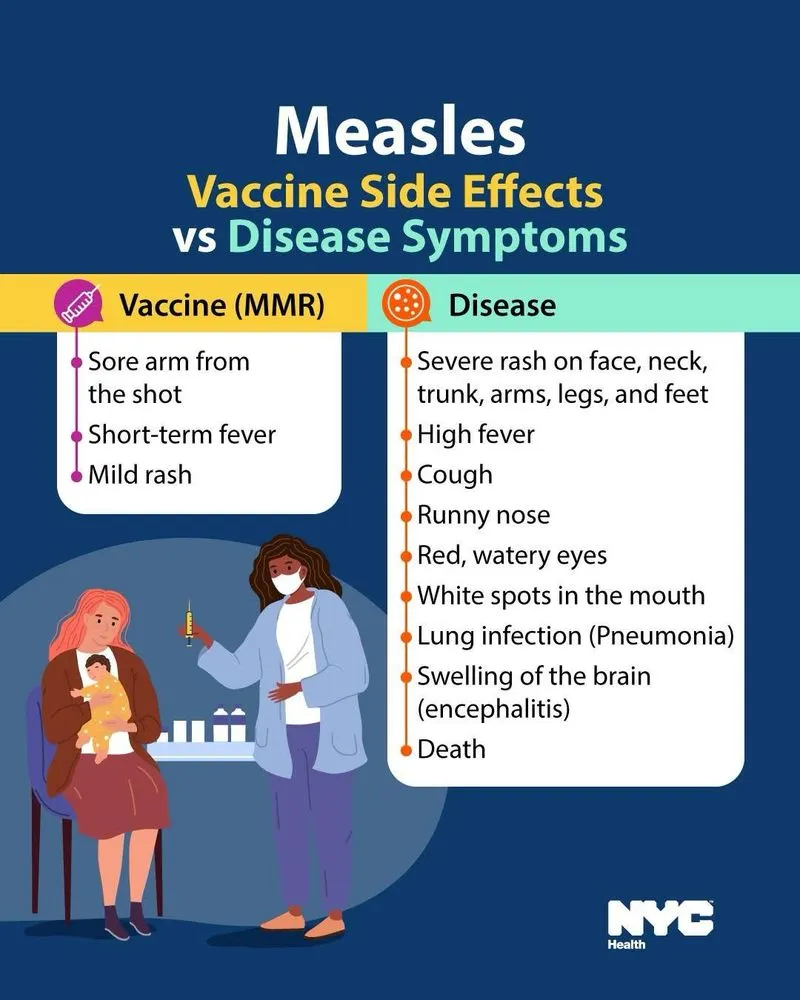Unmasking Measles: Are You Aware of These Alarming Symptoms?
In recent months, the resurgence of measles cases has raised significant alarm among health officials and parents alike. As of February 2025, 14 reported cases have emerged across five states in the U.S., reminding us that this once-eliminated disease is still a threat. Understanding the symptoms of measles is crucial for early detection and prevention, especially given its highly contagious nature.
Measles is a viral infection that spreads through respiratory droplets, making it incredibly easy to contract. The Centers for Disease Control and Prevention (CDC) emphasizes that measles can remain airborne for up to two hours after an infected person leaves a room, increasing the risk of transmission in crowded or enclosed spaces. This highlights the importance of maintaining high vaccination rates within communities to protect vulnerable populations, particularly young children.
Symptoms of measles typically manifest 7 to 14 days after exposure to the virus. Initially, individuals may experience a high fever, accompanied by a cough, runny nose, and red eyes. These early symptoms can easily mimic those of other respiratory illnesses, making it challenging to diagnose measles without the characteristic rash that appears later.
Koplik’s spots, small white spots that develop inside the mouth, are a unique early sign of measles that can help distinguish it from other illnesses. These spots often appear before the rash and serve as a critical indicator for healthcare providers.
Approximately 3 to 5 days after the initial symptoms, a distinctive red rash begins to develop, starting at the hairline and spreading downward across the body. This rash is not only a hallmark of measles but also signifies the progression of the disease, often alarming parents and caregivers.
The complications associated with measles can be severe. Estimates indicate that 1 in 1,000 children infected with measles may die from related complications, such as pneumonia and encephalitis. Moreover, about 1 in 5 unvaccinated individuals may require hospitalization due to severe illness. The potential for long-term complications, including subacute sclerosing panencephalitis (SSPE), a rare but fatal neurological condition, underscores the necessity of prompt medical attention and intervention.
Vaccination remains the most effective means of preventing measles. The measles, mumps, and rubella (MMR) vaccine is safe and effective, providing approximately 97% immunity against measles after two doses. The CDC recommends that children receive their first dose between 12 and 15 months of age, with a second dose administered between 4 and 6 years. However, misinformation about vaccines has contributed to declining vaccination rates, prompting public health campaigns to combat these misconceptions.
Public health officials stress the importance of awareness and education regarding measles symptoms and the critical role of vaccination in preventing outbreaks. Parents are encouraged to consult healthcare providers for accurate information about measles symptoms and vaccination schedules.
In conclusion, the alarming rise in measles cases serves as a stark reminder of the importance of vaccination and awareness. Understanding the symptoms—high fever, cough, runny nose, red eyes, Koplik’s spots, and the distinctive rash—is essential for early identification and treatment. As communities face the threat of measles resurgence, public health campaigns and education play a vital role in safeguarding the health of our children and communities.
For more information on measles symptoms and prevention, visit the CDC’s website or consult your healthcare provider.






Leave a Comment